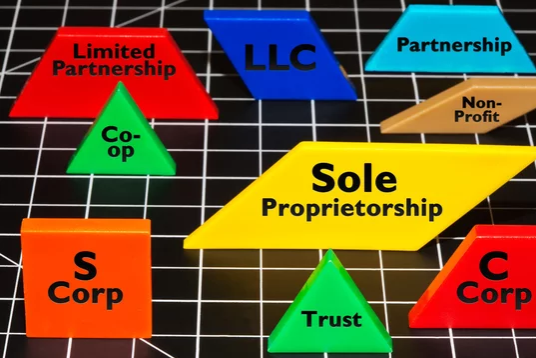· 5 min read
Where to get money
Explore early-stage equity and debt financing options for startups, from personal funds and angel investors to SBA loans and venture capital. Learn how to strategically fund your business and avoid common pitfalls.

Early-Stage Equity
Planning. Before you do anything, you need to have a clear-headed understanding of how much cash your venture is likely to need before it is self-sustaining. Talk with both successful and unsuccessful entrepreneurs. Most startups fail, and you need to understand how much money you and your investors could lose. In the happy event your products have strong demand and you are a talented CEO, how much money will be required to get to profitability? CPG businesses are capital-intensive and fairly low-margin. A lot of cash is required to get them to scale. We’ve seen companies go through more than $20 million.
Your own funds. At incorporation as a C-Corp, you should contribute your own funds to the business. This shows investors that you are committed to the venture and believe in it. It also shows that if the business fails, you are likely to suffer harm, which gives investors comfort that you will work tirelessly to protect their money.
The biggest mistake that entrepreneurs make is investing too much of their own money, or taking out too many loans. If you overexpose yourself personally, you may end up doing irreparable harm to yourself financially, emotionally, and to your health.
Friends and Family. After you have generated your first samples and perhaps successfully sold them locally, it is appropriate to raise money from your friends and family. This will allow you to continue to pay bills, maybe get a website up, and increase your inventory.
Angels are wealthy individuals that may have interest in either helping local entrepreneurs or making money on their investments. You might find them at local social or civic clubs or on charity boards. This should be your primary source of financing until you get to around $1 million in annual revenue. You can either structure these investments as equity or convertible debt.
Crowdfunding Sites like WeFunder allow you to raise money from small investors. My experience is that people will not purchase equity in your company unless they know, like, and trust you. I would not expect this avenue to yield much for the typical CPG startup. The amounts you raise may not move the needle for you.
Angel groups. As the name implies, these are groups of angels that form an investing club. They usually invest only locally. They may invite you to pitch to the group. You can find many of these groups on Gust.
Debt
Debt financing may be preferable to equity, because it does not dilute your ownership. It is sometimes said that debt is cheaper than equity for this reason. However, even here, the type of debt you can qualify for depends on the stage of the company. Most of the debt requires a personal guarantee, so again, please be aware of your exposure.
There are a lot of unscrupulous lenders preying on small businesses and their owners. Do not rely on the quoted interest rates. Instead, use the XIRR function in Excel to calculate the true interest rate you are paying based on the repayment schedule.
Personally guaranteed loans. If you are willing to personally guarantee a loan, lenders may not even care too much about the state of the company’s finances. I would again caution against exposing yourself too much via personally-guaranteed loans. The result can be disastrous for you personally.
State-sponsored loan programs. State governments often want to encourage businesses, and they offer a myriad of different programs, again depending on the stage of the company. Often these programs are in partnership with local banks. As such, they may require profitability. Here is an example from Oregon.
— Revenue-based financing. Kickfurther runs a crowdfunding website that is a bit different, and much more useful than traditional crowdfunding. Investors on the platform lend money at reasonable rates. Most of the investors are banks, so the raises are usually successful. As you repay loans on Kickfurther, the amount you can borrow increases. Kickfurther does require a personal guarantee to back up the loan. Please limit your exposure.
At approximately this rung of the ladder is the English company Wayflyer. Their rates are slightly lower than Kickfurther, and they do not require a personal guarantee nor collateral. However, their underwriting is stricter than Kickfurther.
— Asset-based financing. Further up the ladder, so-called Asset-based lenders, or ABLs will make secured loans. Acceptable security is Accounts Receivable or equipment. There are only a couple that take inventory as collateral, making this of limited use for CPG brands. If they take inventory as collateral, they usually will require that AR is at least 50% of the collateral in the deal. There are hundreds of ABL lenders.
— SBA loan. When your company can show four months of continuous profitability, you may qualify for an SBA loan. If you have made it this far, congratulations! SBA loans are a government program subsidized by the Small Business Administration, a Federal agency. The approval is done by a participating bank. If you default on the loan, the government will bear 75% of the loss. The loan amounts can be very large, so this is definitely a milestone to strive for.
Later stage financing
Venture Capital. When your company has reached $5 million in revenue and has a 40% gross margin after trade-spend, venture capitalists may begin to be interested. At this point you will issue preferred stock to the VC in a so-called Series A round.
Bank Loans Commercial loans require two years of profitability. Don’t expect to get a commercial loan until your business is stable and profitable. This is the most desirable type of financing, and the hardest to get.
SAFEs, Priced Rounds, and Convertible Debt. Preferred and Common. This blog article has deliberately skipped over discussing the structure of capital raises and the types of instruments you can issue. These will be treated in future articles.
If you have any questions about how to finance your business, please contact us.



